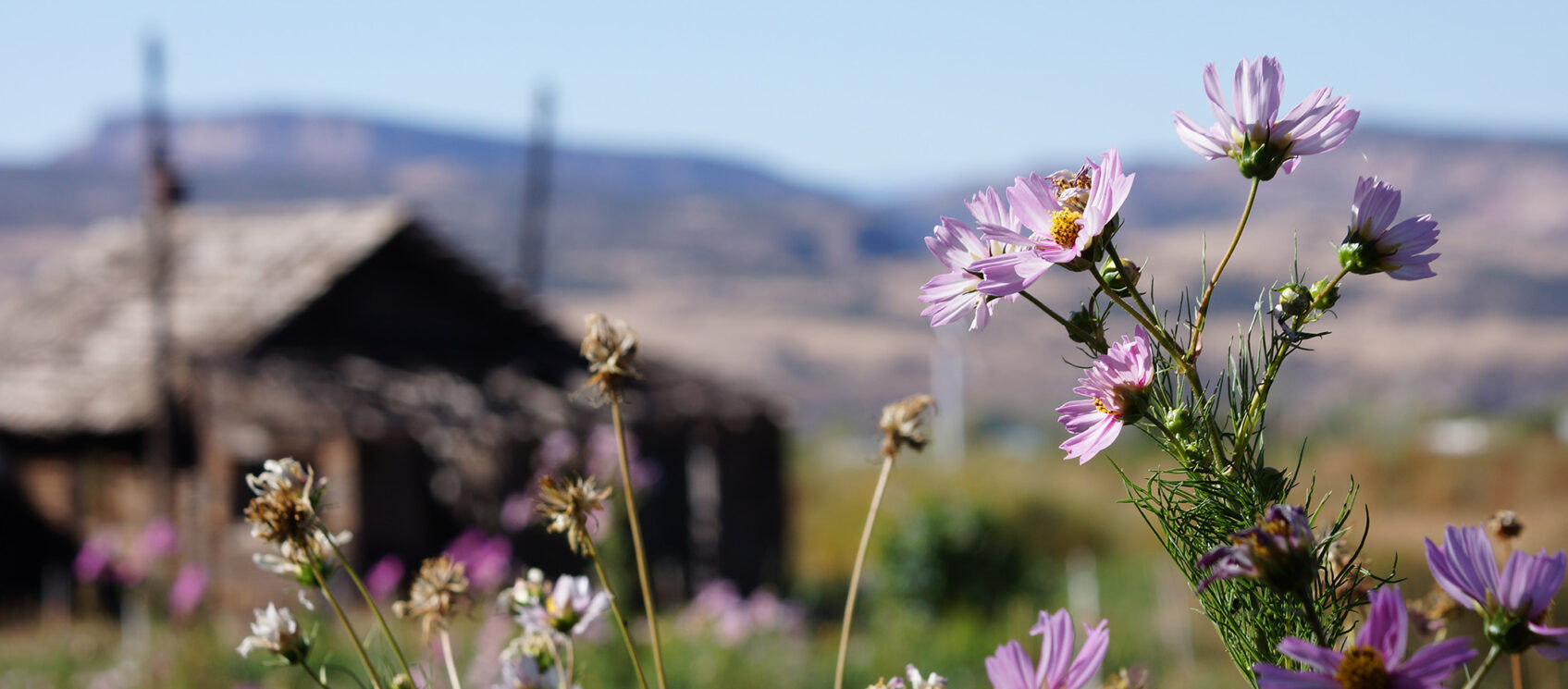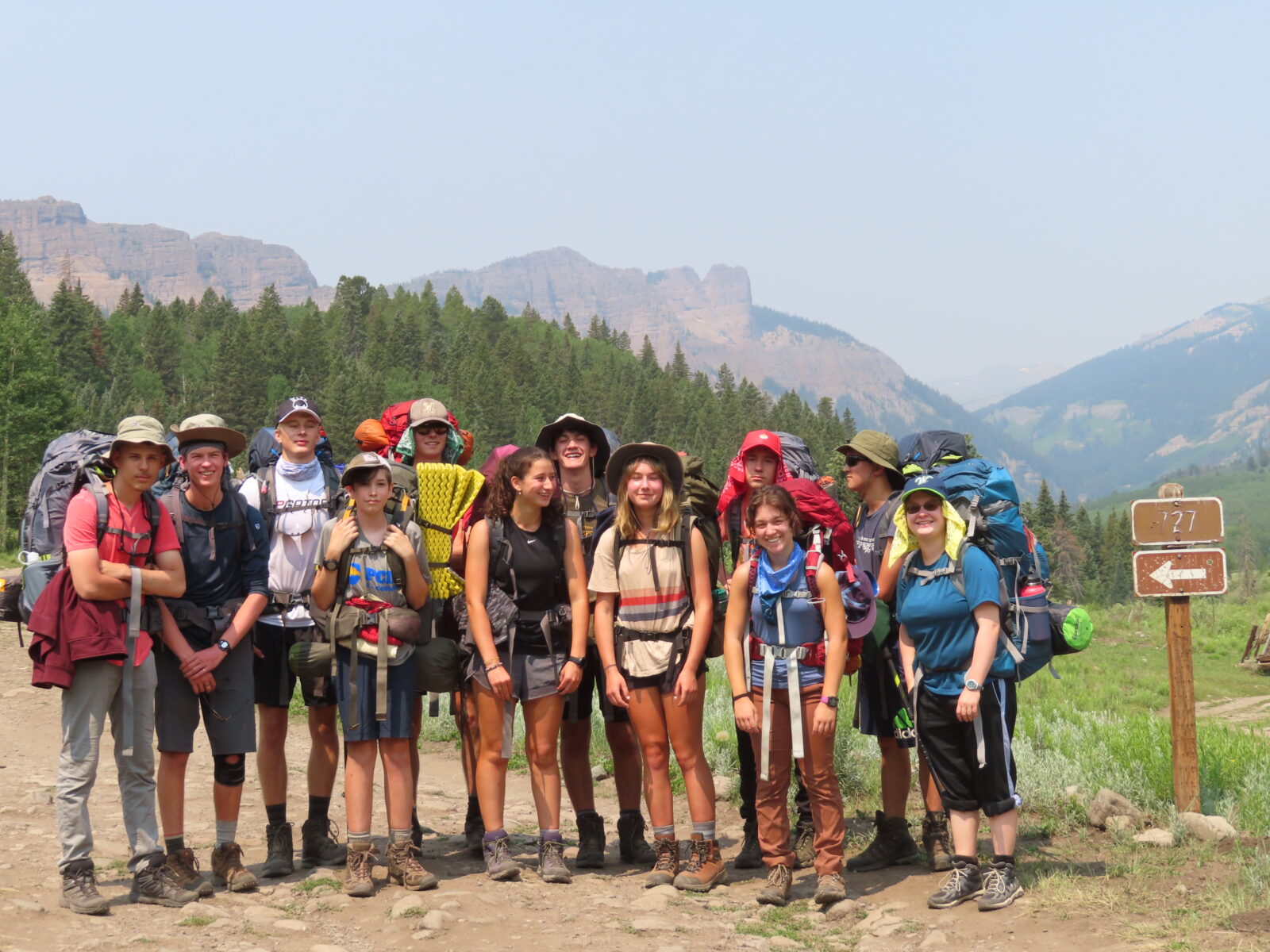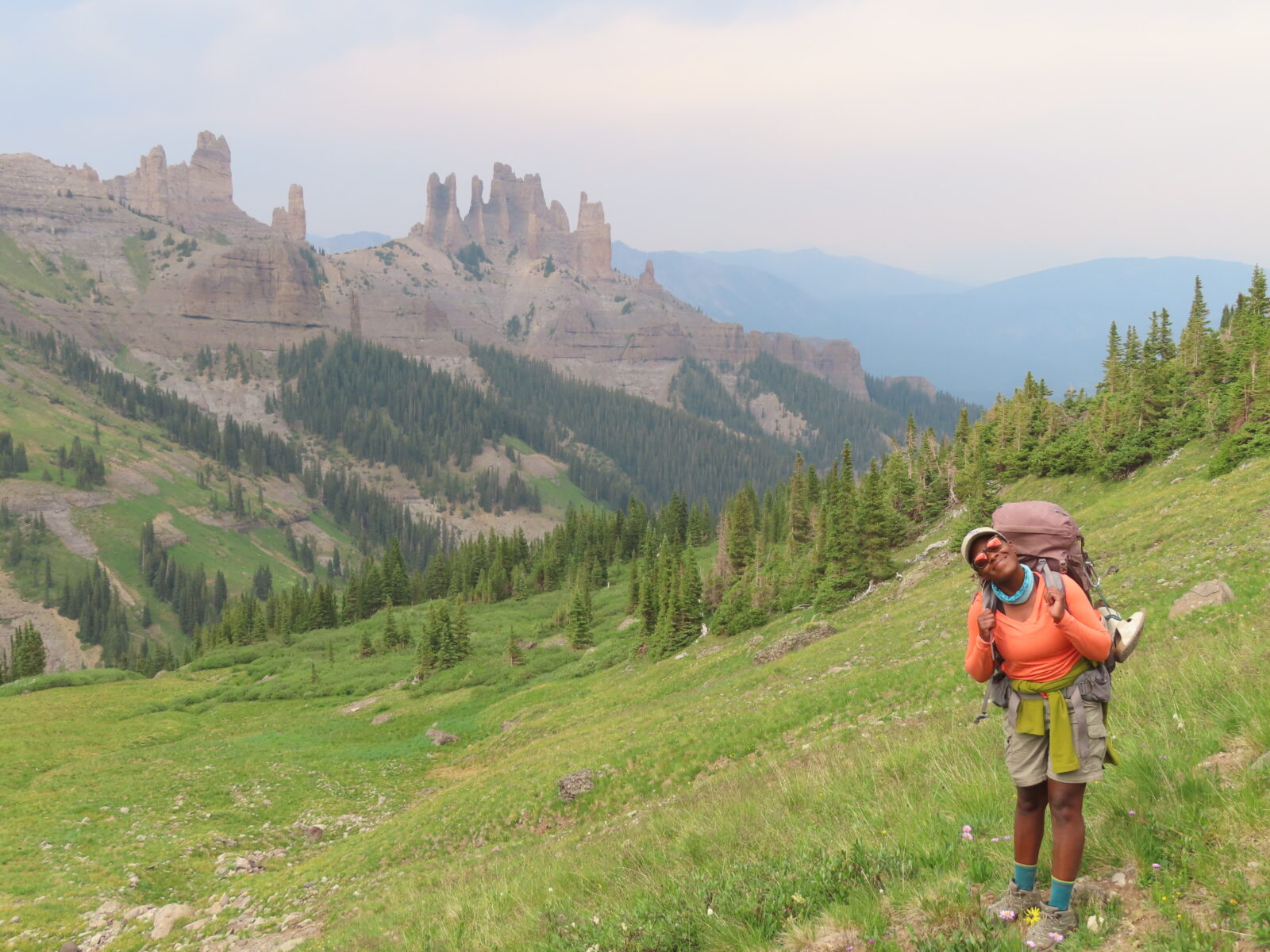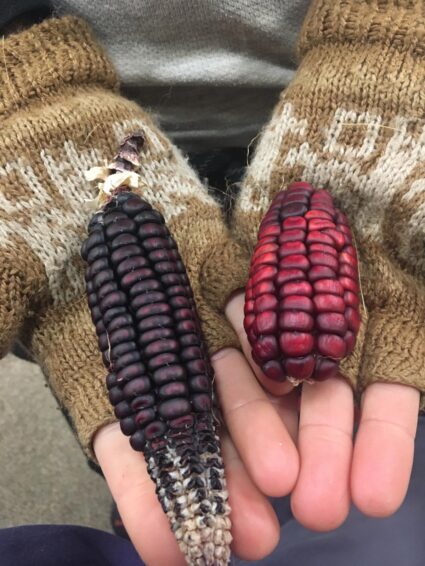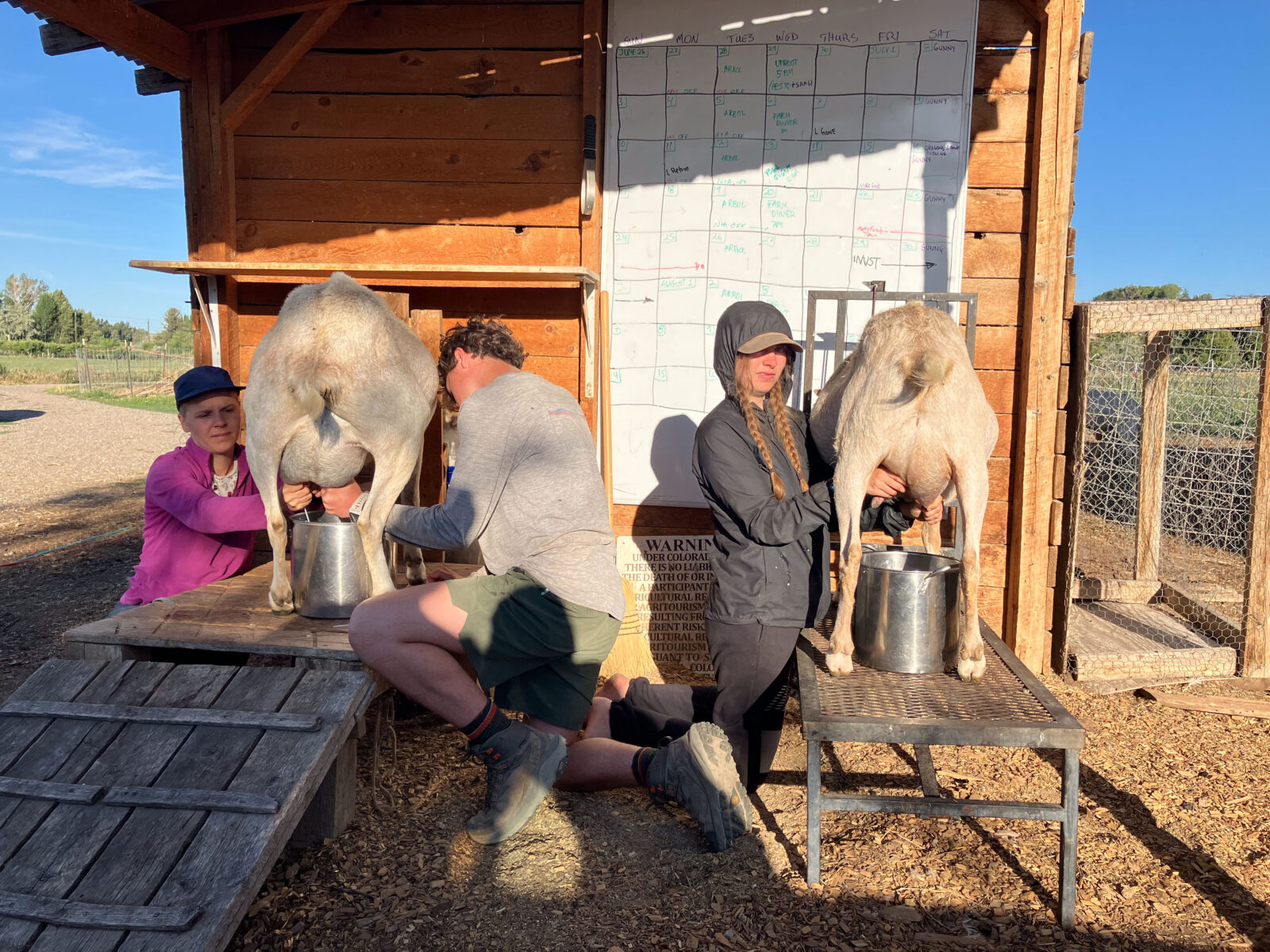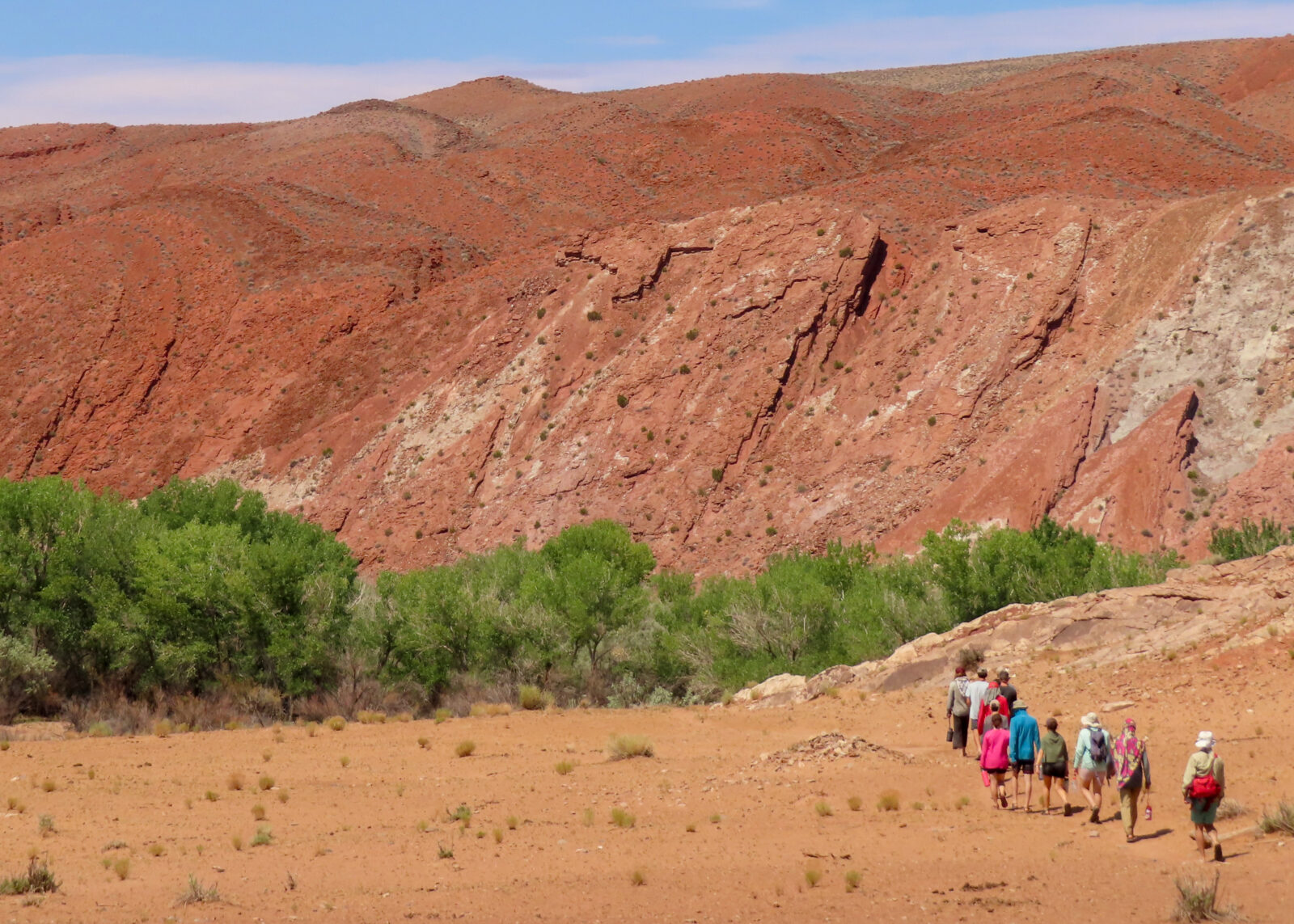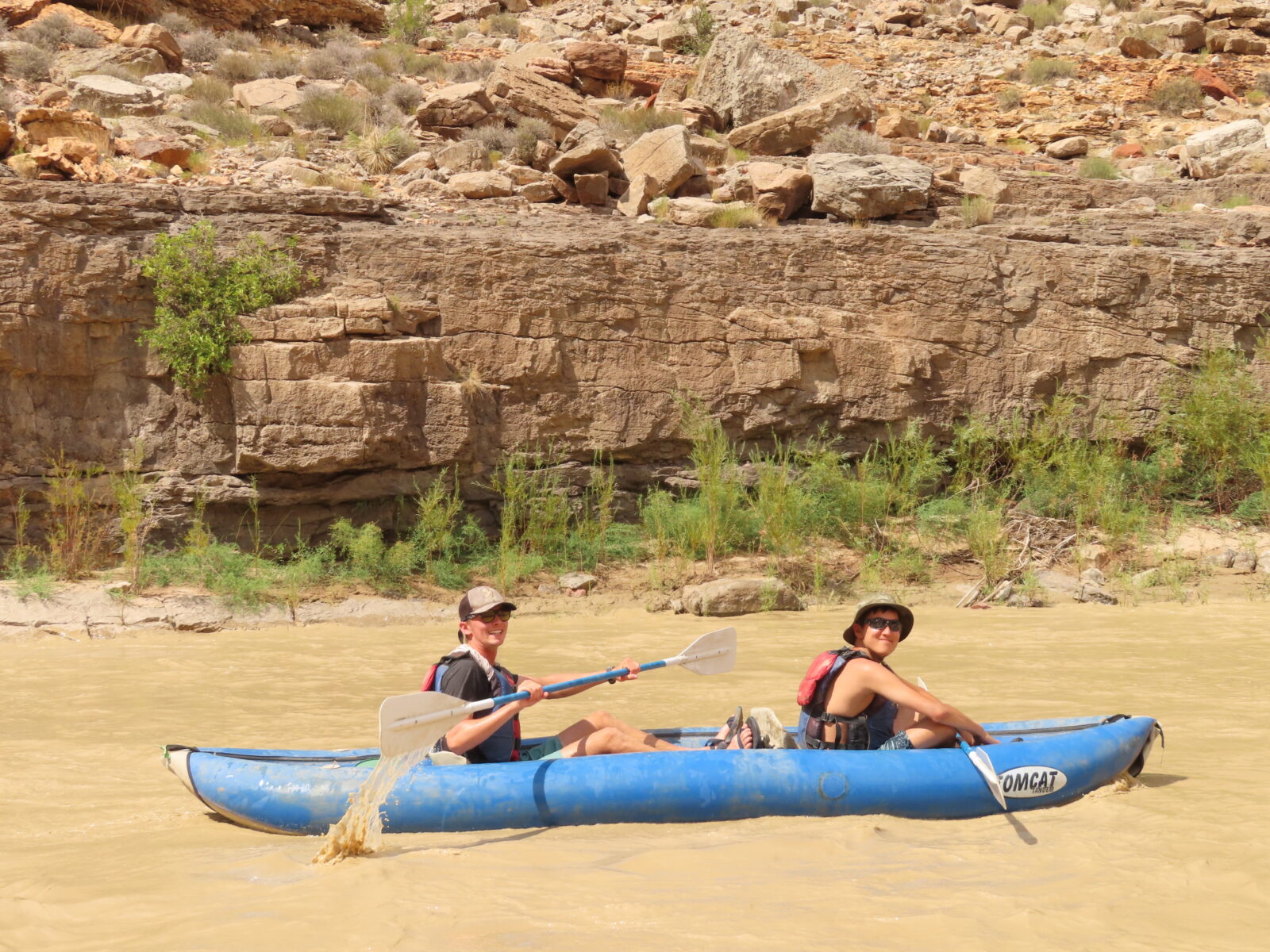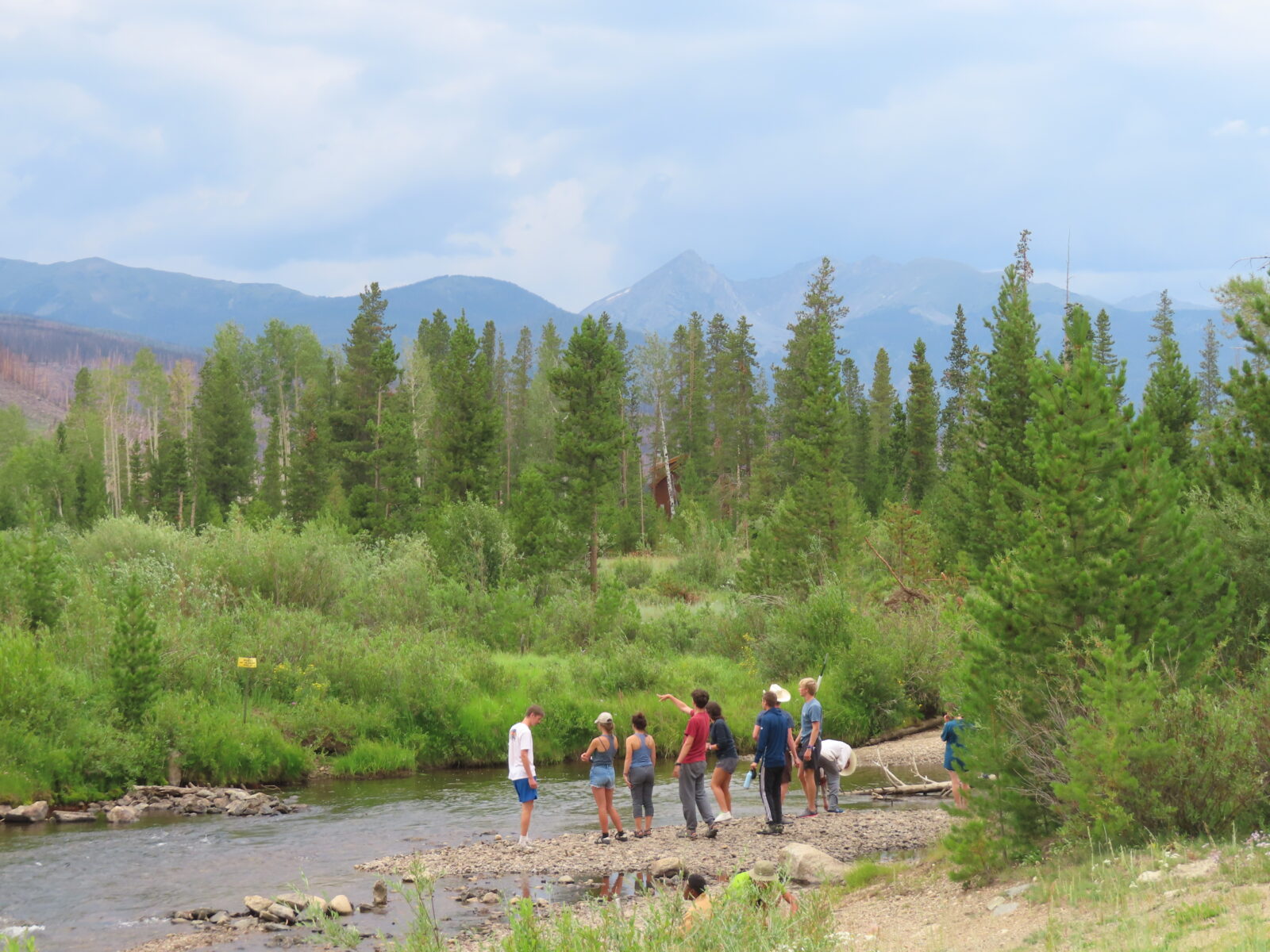Colorado River Basin: Sustainability & Resilience (4-week Sample Itinerary)
The following is a sample itinerary based on past courses; actual itineraries may vary.
-
WEEK 1: ORIENTATION & INTRODUCTION TO COLORADO
Our journey starts in Boulder, Colorado, ancestral Southern Arapaho land and Where There Be Dragons administrative base. We adjust to the altitude and get to know our community of fellow travelers. We’ll have day-hikes in the nearby rocks and canyons, learn about the wild edible plants of the region, and begin hearing stories about water, land, and the history of the Colorado River Basin. Following our orientation we embark on foot on our first hikes towards the Continental Divide, trekking through the foothills into lush aspen forests as we explore the Rocky Mountains. -
WEEK 2: BACKPACKING IN THE ROCKY MOUNTAINS
Our journey on foot continues as we hike across the Continental Divide to the headwaters of the Colorado River. As a group, we’ll learn the skills to be comfortable in the high alpine wilderness, to navigate remote alpine basins, and to lead our peers through challenging terrain. Along the route, we’ll have opportunities to summit peaks, perhaps reaching heights of 13,000+ feet. At the end of our route, we descend to the Colorado River at the Adams Tunnel, where most of the river’s flow gets diverted to farms and cities on the far side of the mountains. -
WEEK 3: PERMACULTURE & SUSTAINABLE FOOD SYSTEMS
We follow the course of the the Colorado River to Glenwood Springs and the Roaring Fork Valley. Here, as we focus on water and land use in the river basin, studying permaculture at one of the region’s oldest permaculture centers. We’ll visit a seed center working to keep alive the rare seeds that thrive in the arid mountain climate—seeds that our world will need for an uncertain future. -
We continue our study of sustainable land and water use as we drive over the mountains into Paonia, a town of apple and peach orchards where the Rocky Mountains begin to dissolve into the canyons and mesas of the Colorado Plateau. As we move further and further from the urban areas of the Front Range, we get accustomed to the slow life, removed from the haste and hustle of the cities where most people in Colorado live.
-
WEEK 4: CEDAR MESA & SAN JUAN RIVER FLOAT
We make our way into Utah and the beautiful Cedar Mesa area which sits below twin buttes resembling the ears of a giant bear. This is the heart of Bears Ears National Monument, and the center of the fight for preservation of lands sacred to the native peoples of the region. Here we embark on our second extended backpacking trip through a very different desert landscape. -
We travel through red rock canyons surrounded by dramatic desert mesas and mountains. After our trekking time, we ready our selves to float the upper portion of the San Juan River. One of the largest tributaries of the Colorado River, the San Juan originates in the Southern Rockies and meanders through desert canyons filled with cottonwood trees, hidden ruins, and thousand-year-old rock art. Our days will be spent learning about the geology and history of the area as we paddle Class II and Class III rapids.
-
The final few days of our time together is dedicated to reflecting on our journey, celebrating our accomplishments, and preparing for our journey home. We'll return to the Boulder area to ask why our engagement with the land and water of the Colorado River Basin was important, how to keep that connection alive, and how we can use the lessons learned here to pursue a sustainable future for the places we call home.

